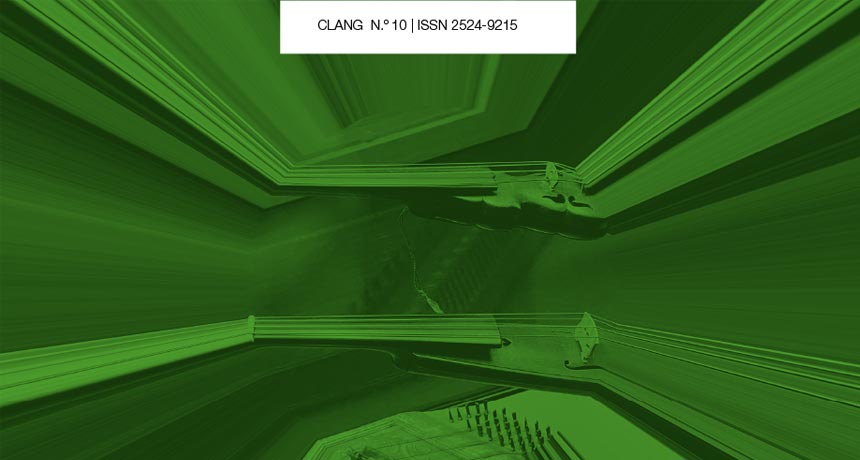Beat Music and The Normalization of Rock Aesthetic in Argentina
DOI:
https://doi.org/10.24215/25249215e050Keywords:
Beat music, pop-rock, popular music, ArgentinaAbstract
The success of beat music during the second half of the 1960s is a key but little-studied episode in the history of Argentine popular music. The emergence of numerous local groups inspired by the Beatles and other similar artists produced a strong renewal of youth music and contributed strongly to the formation of pop-rock in the country. In this article I propose the musical analysis of one of the fundamental songs of this phenomenon, «El extraño del pelo largo» by La Joven Guardia. My argument is that this song, which was one of the great musical hits of 1969, demonstrates the progressive normalization of the rock aesthetic within Argentine popular music.Downloads
References
Alabarces, P. (1993). Entre Gatos y Violadores. El rock nacional en la cultura argentina. Ediciones Colihue.
Covach, J. (2016). The Hippie Aesthetic: Cultural Positioning and Musical Ambition in Early Progressive Rock [La estética hippie: Posicionamiento cultural y ambición musical en el primer rock progresivo]. En Spicer, M. (Ed.), Rock Music, pp. 37-64. Routledge.
Del Guercio, E. (Director). (2012). Cómo hice. Capítulo: El extraño del pelo largo [Documental]. Arias Del Guercio.
Di Cione, L. (2013). La doble fundación del rock en la Argentina. Una invitación a repensar su emergencia a partir del estudio de una colección de simples de vinilo En Música e investigación. Revista anual del Instituto Nacional de Musicología Carlos Vega, (21), pp. 81-107.
Drott, E. (2013). The End(s) of Genre [El(los) fin(es) del género]. En Journal of Music Theory, 1, (57), pp. 1-45. https://doi.org/10.1215/00222909-2017097
«Extraños a granel». (Agosto de 1969). Pinap, N° 17, pp. 69-72.
«El secreto de La Joven Guardia». (diciembre de 1969). Cronopios, N° 3, p. 15.
Garage Latino (25 de noviembre de 2013). La Joven Guardia - El extraño de pelo largo (1969). https://garagelatino.blogspot.com/2013/11/la-joven-guardia-el-extrano-de-pelo.html
Guerrero, J. (2010). Cómo se cuenta la historia: criterios historiográficos en la cronología del rock nacional. En García, M. A. (Ed.), Rock en papel. Bibliografía crítica de la producción académica sobre el rock en Argentina, pp. 65-71. Edulp.
IMDb. (s. f.). Escala Musical. https://www.imdb.com/title/tt0060378/ Kirby, P. (2017). Beat Music [Música beat]. En Bloomsbury Encyclopedia of Popular Music of the World. (11), pp. 56-61. Bloomsbury Academic.
La Joven Guardia (1969). El extraño del pelo largo [Vinilo]. RCA.
La Joven Guardia (1969). La extraña de las botas rosas [Vinilo]. RCA.
La Joven Guardia (1969). El extraño del pelo largo [Canción]. En El extraño del pelo largo. RCA.
Manzano, V. (2017). La era de la juventud en la Argentina. Cultura, política y sexualidad desde Perón hasta Videla. FCE.
Moore, A. F. (2012). Song Means: Analysing and Interpreting Recorded Popular Song [Los sentidos de la canción: Análisis e interpretación de la canción popular grabada]. Ashgate.
Moore, A. F. (2021). «Beat Music» [Música beat]. En Sadie, S. (Ed.). The New Grove Dictionary of Music and Musicians, Second Edition [Dicccionario New Grove de Música y Músicos, Segunda Edición], Vol. III (pp. 24-25). Macmillan.
«Música, radio, canal 7», Gente, 6 de marzo de 1969, p. 60.
Pujol, S. (2015). Escúchame, alúmbrame. Apuntes sobre el canon de «la música joven» argentina entre 1966 y 1973, Apuntes de investigación del CECYP, (Año XVII), (25), pp. 11-25.
Regev, M. (2002). The «Pop-Rockization» of Popular Music [La «pop-rockización» de la música popular]. En Hesmondhalgh, D / Negus, K. (Eds.), Studies in Popular Music,pp. 251-264. Arnold.
Shuker, R. (2005). Popular Music. The Key Concepts (Second Edition) [Música popular. Los conceptos clave (Segunda Edición)]. Routledge.
Downloads
Published
How to Cite
Issue
Section
License

This work is licensed under a Creative Commons Attribution-NonCommercial-ShareAlike 4.0 International License.
The acceptance of the manuscript by the magazine means the non-exclusive cession of the property rights of the authors in favour of the editor, who allows the reuse, after publication (post print), under a license Attribution-NonCommercial-NoDerivatives 4.0 International.
According to these terms, the material can be copied and redistributed by any means or in any format as long as a) the author and original source of the publication are quoted (magazine and URL of the work), access to the license is provided and whether changes have been made is mentioned; and b) the material is not used for commercial purposes.
The cession of non-exclusive rights means that after the publication (post print) in Clang the authors can publish their work in any language, means and format; in such cases it must be mentioned that the material was originally published in this magazine. Such cession also means the authorization of the authors for the work to be collected by SEDICI, the institutional archive of the Universidad Nacional de La Plata, and to be spread in the databases that the editorial team considers appropriate to increase the visibility of the publication and its authors.
Moreover, the magazine encourages the authors to deposit their productions in other institutional and thematic archives under the principle that offering the society the scientific and academic production without any restrictions contributes to a greater exchange of the global knowledge.












 </a >
</a >












